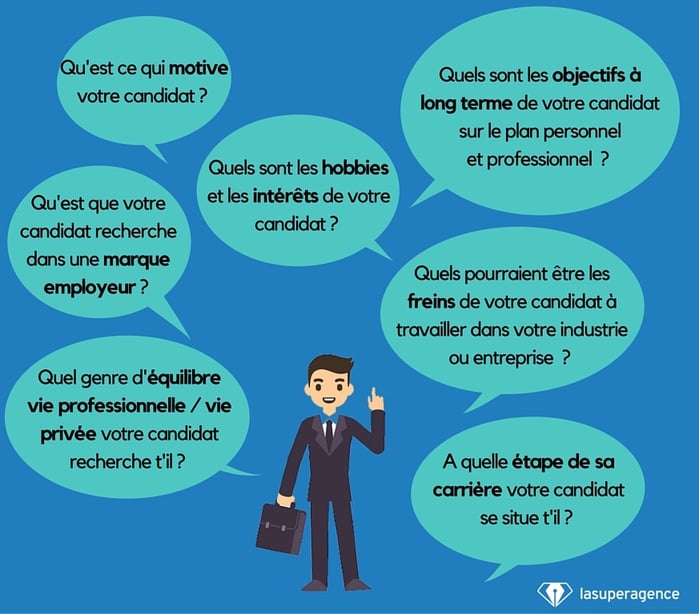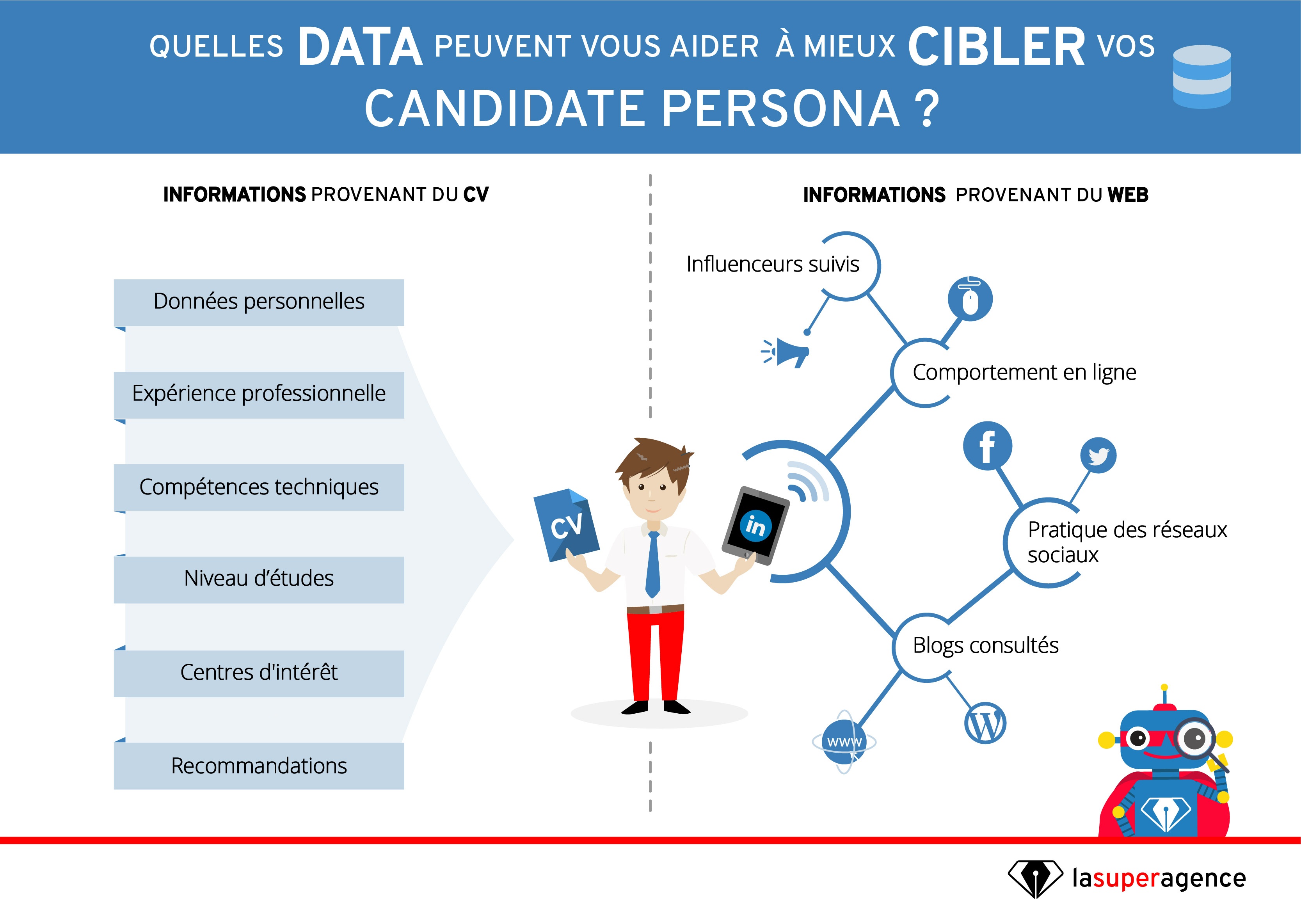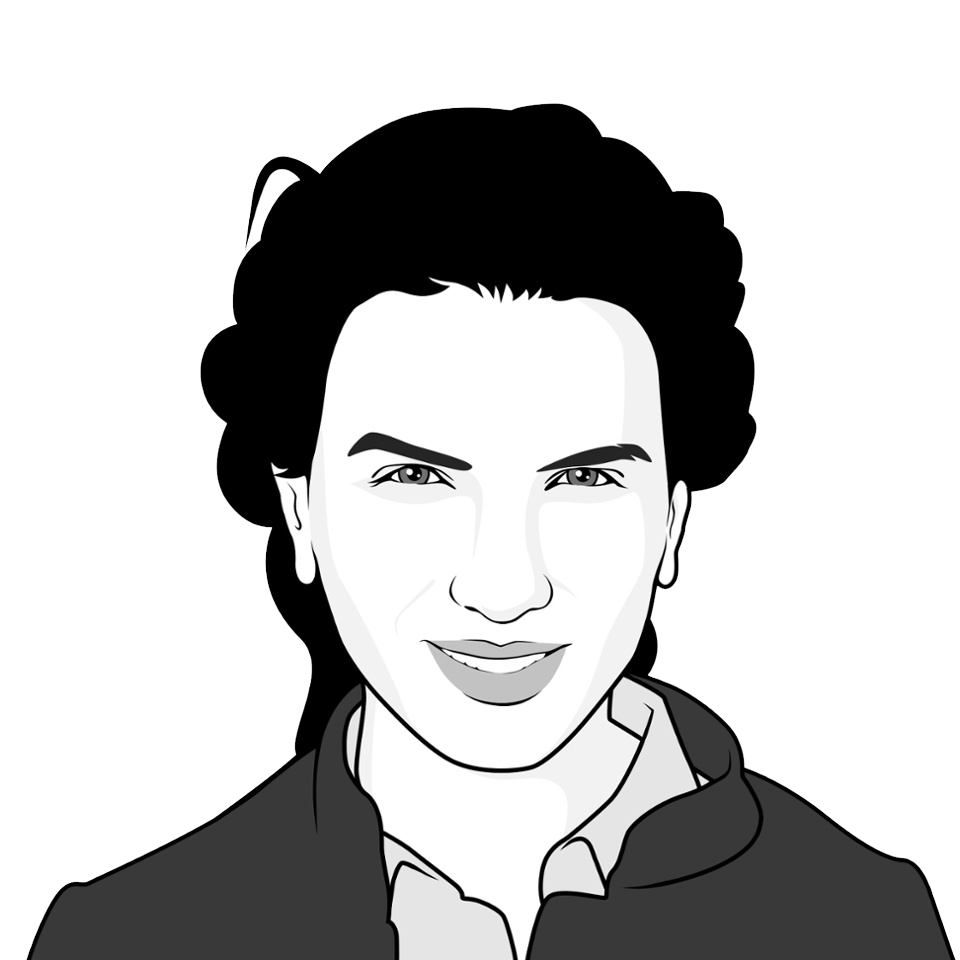The way candidates think has changed dramatically over the past decade or so. They behave more and more like consumers and don't hesitate to compare employer brands before deciding to apply.
In addition, they are considering their career options more, even when they are already employed.
According to this study published by Indeed, 71% of employees say they are actively searching, or keeping an eye on the market. The recruiting then looks like a marketing job where segmentation and behavioral research play a key role. That's where the concept of Candidate Persona, the sketch of your future employee, comes in!

Like a marketing team, recruiters need to understand the targets to whom they want to "sell their products" or in this case, offer their job openings.
To attract them, brands need to know their candidates' research methods, information sources and how they view their future career opportunities to better meet their expectations.
For each position, a fictional representation of the ideal candidate is then established.
A very real dream candidate
The creation of the Candidate Persona must be based on tangible data to be as close to reality as possible. There is a temptation to fill in the blanks randomly. Sometimes this happens when a recruiter thinks he knows everything about a Candidate Persona. It is best to avoid this.
The recruiting world has changed so much in recent years that it would be too presumptuous to think we know everything about the actual habits of the ideal candidate.
Identifying your Persona's age, education, and experience is not enough to paint a picture of them. The Candidate Persona also has motivations, hobbies, aspirations, etc.

You will identify their unique behaviors or points of dissatisfaction in their professional and personal lives.
A list of questions to reveal your candidate's motivations will help.
First, collect information on age, job title, location, education, interests (work and life), work flexibility, work/life balance, current salary and desired salary.
For each position, it is useful to specify the skills acquired, software used, certifications obtained. These elements help show the candidate's ability to learn over time, curiosity and ability to work with others.
It is also important to know your candidate's mindset. Know what drives their decisions, their definition of success or their desire to be involved in an organization. Mirroring these questions, find out their fears by asking them to define failure, for example.
These questions around the Candidate Persona are at the heart of the Inbound Recruiting.

The Candidate Persona is an essential part of Inbound Recruiting
How to gather the necessary information ?
You can create an online questionnaire that you send to your personal or professional network. Also feel free to relay your request on your personal Facebook or Twitter accounts and ask your co-workers to do the same.
As the world's largest professional network, LinkedIn is a wealth of information. Beyond experience and education, you can analyze the influencers a potential candidate follows, the groups they belong to or the kind of content they share with their network.
 The CV and online presence provide an overview of the Candidate Persona.
The CV and online presence provide an overview of the Candidate Persona.
But to get the most complete picture possible, the best tool remains the face-to-face interview.
To do this, interviews with 3 to 5 potential candidates provide a good representation of the desired person. The process should be repeated for each function (sales, marketing, product, etc.)
For each position, you can interview people who are already in your organization. You can also gather valuable information by interviewing people who have turned down a position. A qualified candidate who doesn't want to work in your organization can offer you new insight into your company.
What are the reasons for his refusal? Is it due to your positioning? Your brand? Does he reject your company values or is he uncomfortable with your managerial methods?
If you can talk to people who have ultimately accepted a position elsewhere, you can learn more about these topics.
How to compile information ?
Despite the uniqueness of each story, you will find interesting similarities in each section. Get interested in the recurring responses and find a way to organize the trends into different categories.
The candidate with impeccable expertise or the right mindset ?
Many companies are betting on personality (softskills) rather than expertise. This is because an employee's skills will evolve over time while their personality will remain the same. When it comes time to consider an employee moving to a new position within your organization, it is their personality that will make the difference, not a number of skills.

Depending on your industry, one type of person is usually a good fit. For example, if you are an accounting firm, it doesn't seem like a good idea to want to hire someone who is extremely creative and also messy.
If you work in a highly competitive field where companies are in a fierce war for contracts, someone with no taste for competition might not be a good fit.
If the position you are recruiting for is an administrative one and your candidate is a hands-on person who went to a top business school, present aspects of the job that don't require doing overly repetitive tasks.
When to use the information collected ?
The portrait of your Candidate Persona can be used throughout the recruitment process. It will first help you develop the job description. It will allow you to find the right tone and message when contacting candidates in direct approach (In Mails on Linkedin). It will also refer you to the interest of an application or a profile. You will see more quickly if a person suits the company culture by having already a very precise idea of the person you are looking for.
The portrait of your Candidate Persona can be used throughout the recruitment process.
The positions you're looking to recruit for aren't just for anyone. Your targeted strategy will more easily and unambiguously reach the right people.
Know where to find your candidate
You need to learn how your candidate gathers information, what their preferred social network is, and how they communicate with potential employers. For example, a salesperson may easily take the initiative and contact a company by phone. A developer, on the other hand, will probably wait to be contacted again. This data will help you formulate a strategy for connecting with your candidates.

The Inbound Recruiting doesn't stop with creating the Candidate Persona.
The portrait of your ideal candidate will evolve based on the people you meet and you will change elements over time that will allow you to be even more accurate. All of this will make your candidate even more real and guide you in your decision making.










